TURING, Alan. 'On computable numbers, with an application to the Entscheidungsproblem.' Offprint from: Proceedings of the London Mathematical Society , ser. 2, vol. 42. London: November 12th 1936. 8° (275 x 184mm). 34pp., 230-262 (only, lacking last two leaves, pp.263-266). Stapled (lacking the original wrappers, first leaf almost detached, soiling and staining). Provenance : R.O. Gandy (first leaf inscribed in ink below half-title 'with a few corrections to misprints etc. by ROG', and some pencil marginalia). [With:] -- 'On Computable Numbers, with an Application to the Entscheidungsproblem. A correction.' Offprint from: Proceedings of the London Mathematical Society , ser. 2, vol. 43. London: 1937. 8° (275 x 184mm). 4pp., 544-546. (Creasing and soiling to gutter.) Original olive-green wrappers, stapled (one staple lacking, the remaining one rusted, soiling and staining, wrappers detached. Provenance : R.O. Gandy (small correction in pencil to first page).
TURING, Alan. 'On computable numbers, with an application to the Entscheidungsproblem.' Offprint from: Proceedings of the London Mathematical Society , ser. 2, vol. 42. London: November 12th 1936. 8° (275 x 184mm). 34pp., 230-262 (only, lacking last two leaves, pp.263-266). Stapled (lacking the original wrappers, first leaf almost detached, soiling and staining). Provenance : R.O. Gandy (first leaf inscribed in ink below half-title 'with a few corrections to misprints etc. by ROG', and some pencil marginalia). [With:] -- 'On Computable Numbers, with an Application to the Entscheidungsproblem. A correction.' Offprint from: Proceedings of the London Mathematical Society , ser. 2, vol. 43. London: 1937. 8° (275 x 184mm). 4pp., 544-546. (Creasing and soiling to gutter.) Original olive-green wrappers, stapled (one staple lacking, the remaining one rusted, soiling and staining, wrappers detached. Provenance : R.O. Gandy (small correction in pencil to first page). THE FOUNDATION OF MODERN DIGITAL COMPUTING AND TURING'S MOST IMPORTANT AND LASTING ACHIEVEMENT IN MATHEMATICS. In 1935 while at Cambridge, Turing attended M.H.A. Newman's course on the Foundations of Mathematics. While Kurt Gödel had demonstrated that arithmetic could not be proved consistent, and it was certainly not consistent and complete (see lots 137 and 138), the last of mathematics' fundamental problems as posed by David Hilbert remained: is mathematics decidable? In other words, was there a definite method which could be applied to any assertion which was guaranteed to produce a correct decision as to whether that assertion was true. Known by its German name Entscheidungsproblem , Newman posed the question as to whether a mechanical process could be applied to this. By the words "mechanical process" what Newman really meant was "definite method" or "rule"; but for Turning "mechanical" meant "machine". Turing imagined a machine set up with a table of behaviour to add, multiply, divide, etc. If one assembled lots of different tables for lots of different calculations, and then ordered them by rank of complexity, starting with the simplest, then in theory it would be possible to produce a list of all computable numbers. However, no such list could possibly contain all the real numbers (i.e. all infinite decimals), and therefore the computable could give rise to the uncomputable. Thus Turing understood that no machine -- or "definite method" "mechanical process" -- could ever solve all mathematical questions; and therefore the answer to the Entscheidungsproblem was that mathematics was undecidable. Unfortunately, Alonzo Church had fractionally pre-empted Turing by coming to the same conclusion on the Entscheidungsproblem . However, Church had used the very different approach of lambda calculus, and Newman realized the greatness of Turing's paper lay in his unique approach and conception of machines to attack mathematical problems. Thus, this paper also laid the foundations for modern digital computing. It was a brilliant amalgamation of pure mathematical logic and theory with a practical engineering component. The abstract machines described in 'On computable numbers' would become the reality of Colossus and modern microprocessors. (2)
TURING, Alan. 'On computable numbers, with an application to the Entscheidungsproblem.' Offprint from: Proceedings of the London Mathematical Society , ser. 2, vol. 42. London: November 12th 1936. 8° (275 x 184mm). 34pp., 230-262 (only, lacking last two leaves, pp.263-266). Stapled (lacking the original wrappers, first leaf almost detached, soiling and staining). Provenance : R.O. Gandy (first leaf inscribed in ink below half-title 'with a few corrections to misprints etc. by ROG', and some pencil marginalia). [With:] -- 'On Computable Numbers, with an Application to the Entscheidungsproblem. A correction.' Offprint from: Proceedings of the London Mathematical Society , ser. 2, vol. 43. London: 1937. 8° (275 x 184mm). 4pp., 544-546. (Creasing and soiling to gutter.) Original olive-green wrappers, stapled (one staple lacking, the remaining one rusted, soiling and staining, wrappers detached. Provenance : R.O. Gandy (small correction in pencil to first page).
TURING, Alan. 'On computable numbers, with an application to the Entscheidungsproblem.' Offprint from: Proceedings of the London Mathematical Society , ser. 2, vol. 42. London: November 12th 1936. 8° (275 x 184mm). 34pp., 230-262 (only, lacking last two leaves, pp.263-266). Stapled (lacking the original wrappers, first leaf almost detached, soiling and staining). Provenance : R.O. Gandy (first leaf inscribed in ink below half-title 'with a few corrections to misprints etc. by ROG', and some pencil marginalia). [With:] -- 'On Computable Numbers, with an Application to the Entscheidungsproblem. A correction.' Offprint from: Proceedings of the London Mathematical Society , ser. 2, vol. 43. London: 1937. 8° (275 x 184mm). 4pp., 544-546. (Creasing and soiling to gutter.) Original olive-green wrappers, stapled (one staple lacking, the remaining one rusted, soiling and staining, wrappers detached. Provenance : R.O. Gandy (small correction in pencil to first page). THE FOUNDATION OF MODERN DIGITAL COMPUTING AND TURING'S MOST IMPORTANT AND LASTING ACHIEVEMENT IN MATHEMATICS. In 1935 while at Cambridge, Turing attended M.H.A. Newman's course on the Foundations of Mathematics. While Kurt Gödel had demonstrated that arithmetic could not be proved consistent, and it was certainly not consistent and complete (see lots 137 and 138), the last of mathematics' fundamental problems as posed by David Hilbert remained: is mathematics decidable? In other words, was there a definite method which could be applied to any assertion which was guaranteed to produce a correct decision as to whether that assertion was true. Known by its German name Entscheidungsproblem , Newman posed the question as to whether a mechanical process could be applied to this. By the words "mechanical process" what Newman really meant was "definite method" or "rule"; but for Turning "mechanical" meant "machine". Turing imagined a machine set up with a table of behaviour to add, multiply, divide, etc. If one assembled lots of different tables for lots of different calculations, and then ordered them by rank of complexity, starting with the simplest, then in theory it would be possible to produce a list of all computable numbers. However, no such list could possibly contain all the real numbers (i.e. all infinite decimals), and therefore the computable could give rise to the uncomputable. Thus Turing understood that no machine -- or "definite method" "mechanical process" -- could ever solve all mathematical questions; and therefore the answer to the Entscheidungsproblem was that mathematics was undecidable. Unfortunately, Alonzo Church had fractionally pre-empted Turing by coming to the same conclusion on the Entscheidungsproblem . However, Church had used the very different approach of lambda calculus, and Newman realized the greatness of Turing's paper lay in his unique approach and conception of machines to attack mathematical problems. Thus, this paper also laid the foundations for modern digital computing. It was a brilliant amalgamation of pure mathematical logic and theory with a practical engineering component. The abstract machines described in 'On computable numbers' would become the reality of Colossus and modern microprocessors. (2)
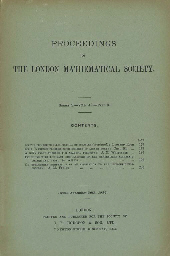

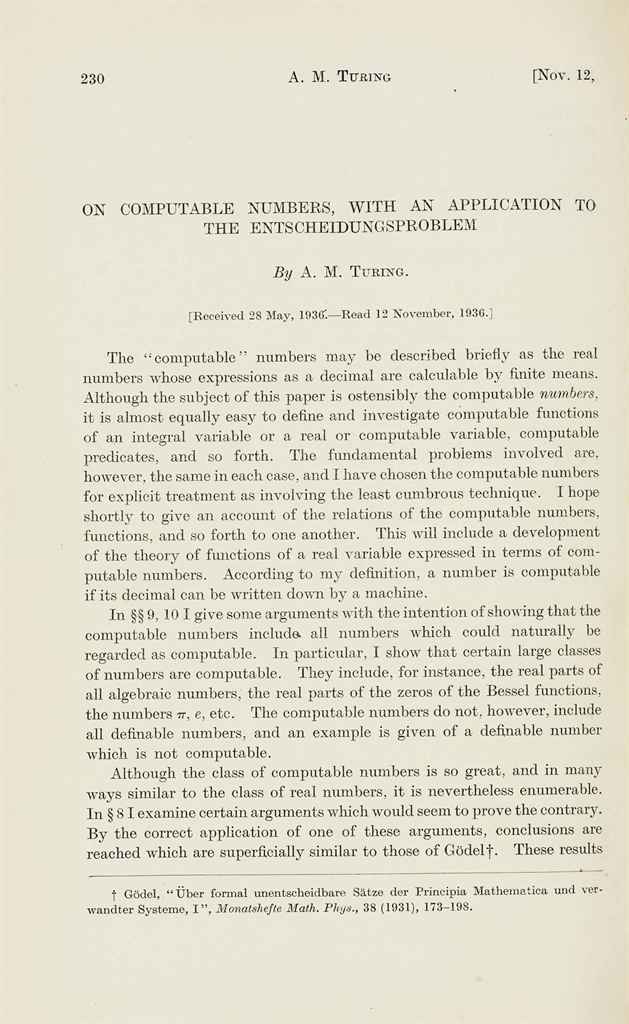
.jpg)

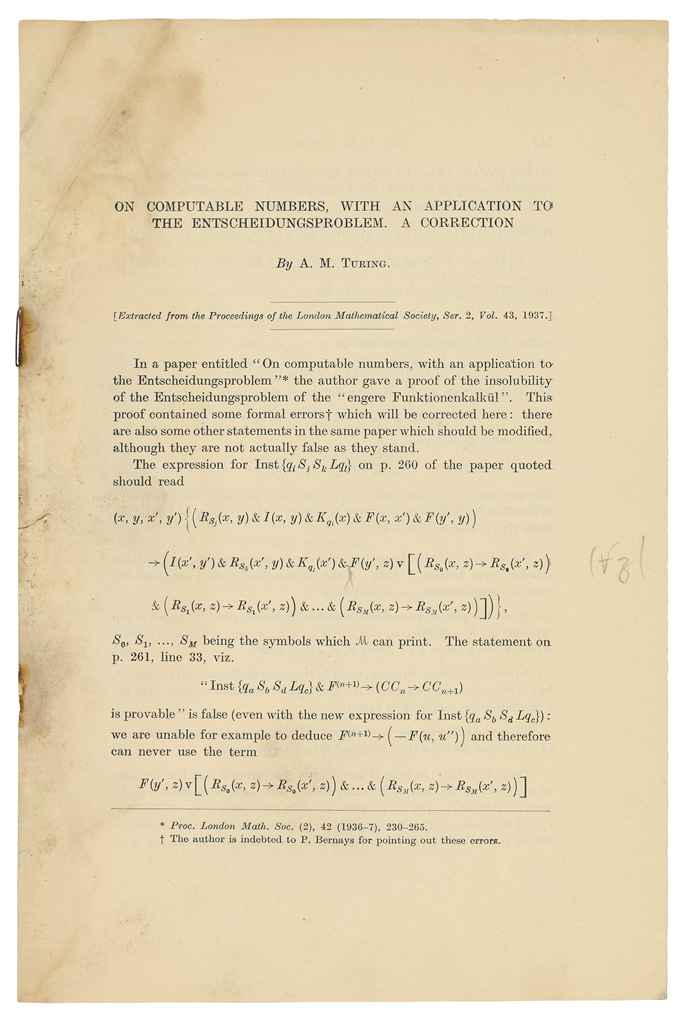


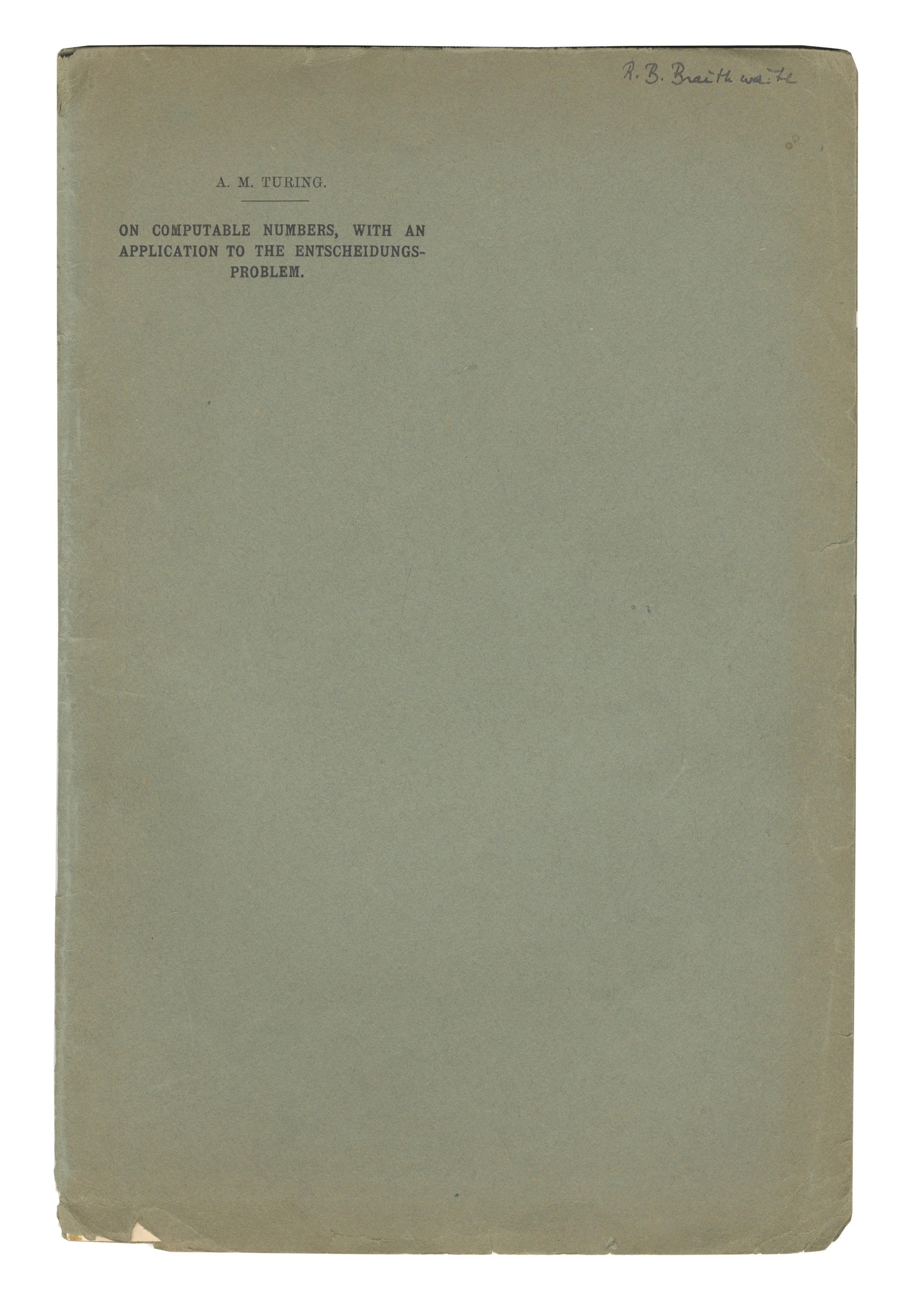



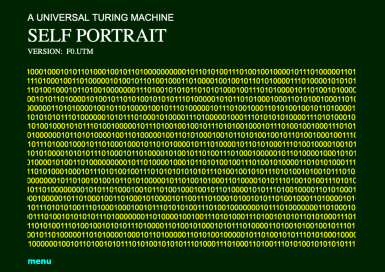
Try LotSearch and its premium features for 7 days - without any costs!
Be notified automatically about new items in upcoming auctions.
Create an alert